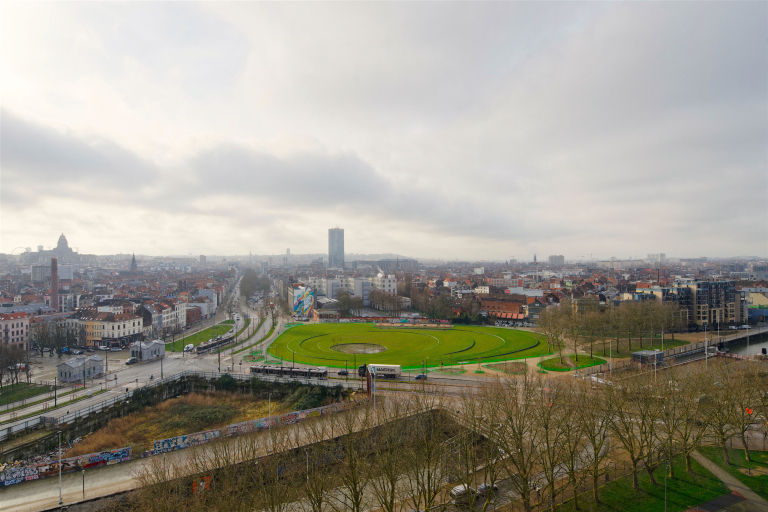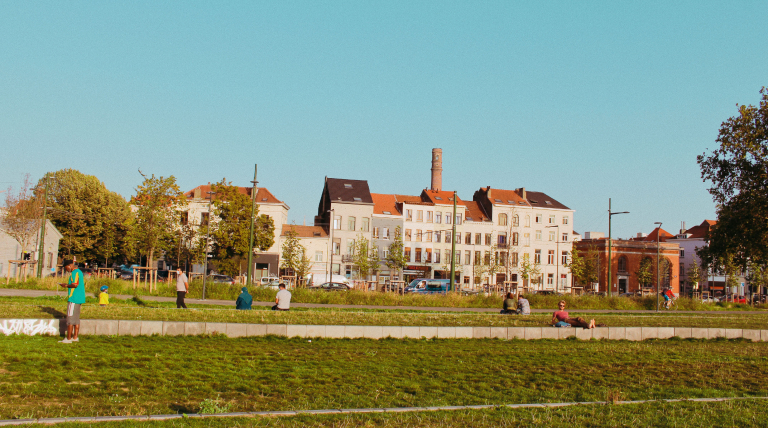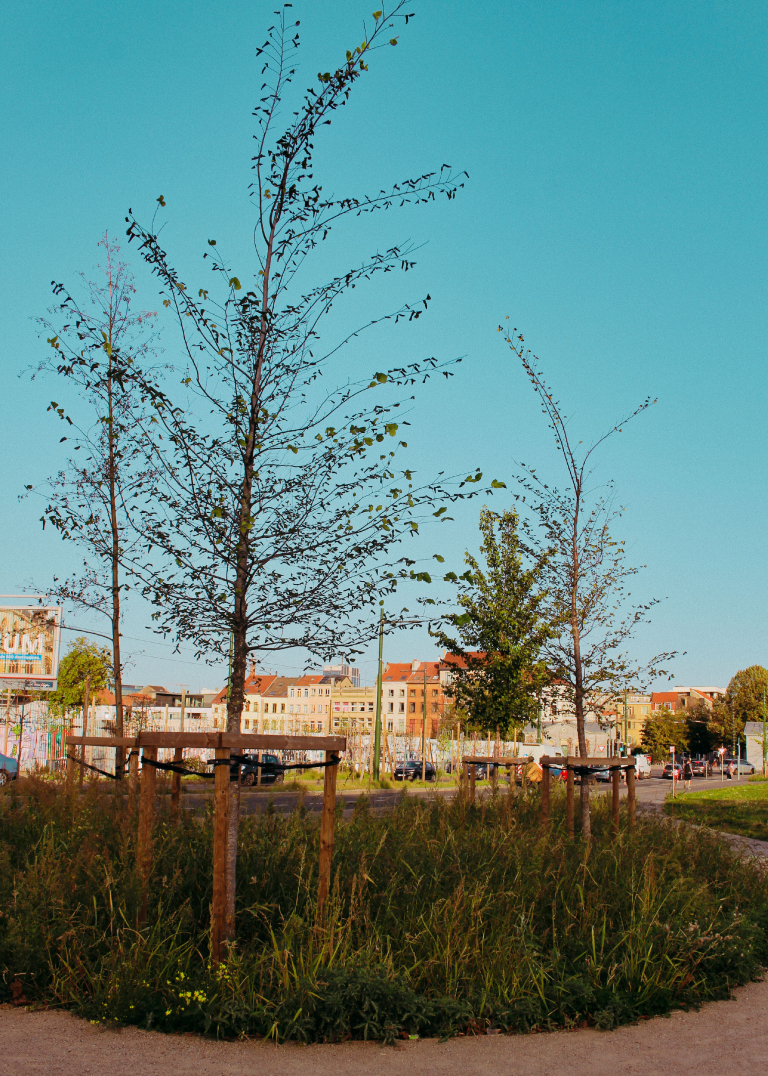Porte de Ninove Park
Programme
Co-creation process and evolutionary park.
The redevelopment of the porte de Ninove Park returns this Brussels river gateway to its former role as a symbolic entrance to the city. This is not a heritage restoration, but an attempt to create a green space that evokes, but does not overstate, the previous configuration of this part of the city. Until the mid-19th century, this was a predominantly agricultural riverside area. The growth of Molenbeek would wipe out this rural landscape. The choice of open parkland, reminiscent of a meadow, creates a real visual contrast that defines the neighbourhood and re-establishes the city gate as a threshold. This urban meadow takes the form of a succession of inclined rings, allowing a play of steps and slopes, which provide shelter from disturbance while offering an open space. The project displays a frugality and simplicity that contrasts with the habit of over-equipping recreational spaces. There is no playground, no sports field. Children can play on the steps, adults can run around the circles. The aim of the designers was to create an open, approachable facility that exposes the users rather than trying to hide them from view, as in most urban gardens. The porte de Ninove park reflects the way in which certain stone-built squares materialize public space, without neglecting its recreational function and its primary mission of bringing a taste of nature in the city to local residents. The desire to interpret this public space is not unrelated to the history of the site and the public campaign which it has attracted. Local people have been calling for the creation of a green space in the neighbourhood for some thirty years. This campaign is currently continuing over the future of the plot of land to the north of the square, on the other side of the avenue. A project to build three towers is being blocked both by the residents and by the adverse opinion of the Master Plan. In terms of spatial quality, the absence of fencing, trees and shrubs could have exposed the park to heavy disturbance by traffic at this entrance to the city, but it has not. On the contrary, the visual clarity of the park seems to expand its influence and allows it to extend into the entire area bounded by the surrounding buildings, the uneven concentric circles stretching beyond its boundaries.
Christophe Catsaro
- urban spaces
- Landscape
- Year of conception
- 2016
- Architect
- Suède 36
- Client
- Brussels Environment
- Architect
- Base Landscape Paris
- Architect
- Clément Willemain
Porte de Ninove
1000 Bruxelles
Belgium
Architectures Wallonie-Bruxelles Inventaires # Inventories 2020-23



